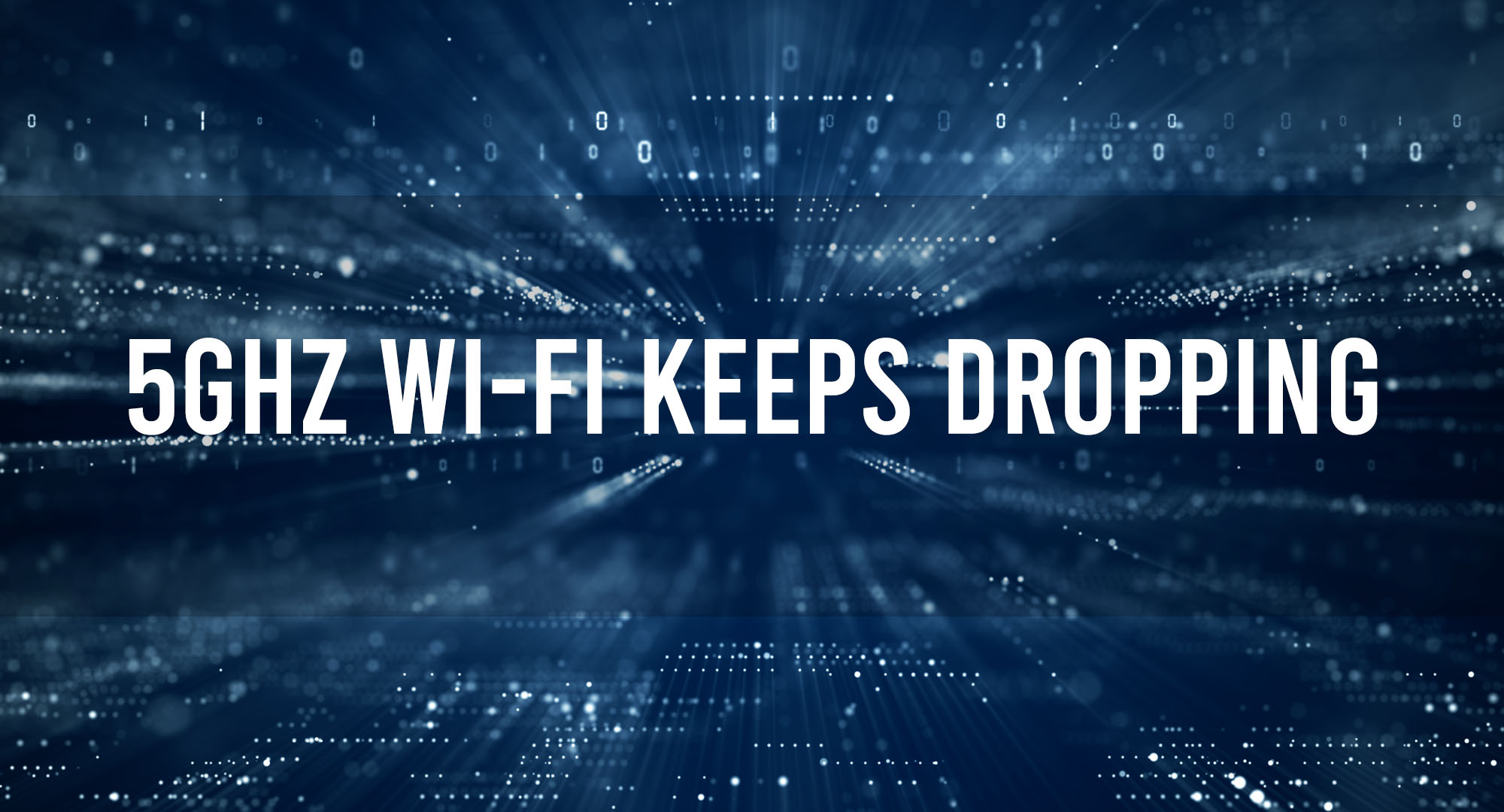In today’s fast-paced digital age, a seamless internet connection has become more of a necessity than a luxury. As users demand faster speeds and more reliable connections, the shift towards 5GHz Wi-Fi networks has become increasingly prominent. While they offer a tantalizing promise of speed and fewer disturbances, they aren’t without their unique challenges.
Grasping the 5GHz Frequency: What Makes It Unique?
Table of Contents
The 5GHz frequency, when compared to its older counterpart, the 2.4GHz, is like comparing a highway with multiple lanes to a busy two-lane street. The 5GHz offers a multitude of non-overlapping channels, reducing the chances of interference from other networks. However, there’s a trade-off: its waves are shorter, which can lead to range limitations..
Common Issues with 5GHz Connections: Beyond Speed and Performance
Despite its advantages, 5GHz Wi-Fi networks can be prone to certain challenges:
- Limited Range: The same shorter waves that allow for faster speeds also mean the 5GHz frequency has a shorter effective range.
- Obstruction Sensitivity: Walls, floors, and even heavy furniture can obstruct and degrade the 5GHz signal more than the 2.4GHz signal.
- Device Compatibility: Not all devices, especially older ones, are compatible with the 5GHz band.
Environmental and Structural Impediments: How Walls and Appliances Affect 5GHz Signals
The 5GHz frequency’s Achilles’ heel is its sensitivity to physical obstructions. Here’s how common household structures and items can impact it:
- Walls and Floors: Dense materials like concrete, brick, and metal can significantly degrade the 5GHz signal. Even wooden doors or thick plaster can impact signal strength.
- Appliances and Electronics: While the 5GHz band faces less interference from household electronics than the 2.4GHz, large metal appliances can act as barriers, reflecting or absorbing the signal.
- Distance: Given its shorter range, the further a device is from the router, the weaker the 5GHz connection becomes.
A dropped connection can be a source of immense frustration, especially when you’re in the middle of an important task. If you find your 5GHz Wi-Fi constantly wavering, fear not. Here’s a comprehensive guide to address and potentially rectify these issues:
1. Router Positioning: More Than Just Convenience
- Central Location: The ideal position for your router is in the center of your home. This allows for even signal distribution across all rooms. Remember, the 5GHz frequency has a shorter range, so optimal placement can make a significant difference.
- Avoid Obstructions: Objects and materials like concrete, brick, and metal can dampen your Wi-Fi signal. Ensure there aren’t too many barriers between your router and devices. Additionally, placing the router elevated, such as on a shelf, can assist in better signal spread.
2. Channel Selection: Navigating the Airwaves Intelligently
- Understanding Channels: Wi-Fi networks operate on specific bands called channels. With numerous devices and networks around, these channels can become crowded, leading to interference.
- Manual Selection: Routers set to automatic channel selection might not always pick the least congested channel. Wi-Fi analyzer tools, many of which are freely available as smartphone apps, can help you gauge channel congestion. Based on this, you can manually set your router to a clearer channel.
3. Hardware and Firmware: The Backbone of Connection Stability
- Firmware Updates: Router manufacturers frequently release firmware updates to fix bugs, enhance security, and improve performance. Ensure your router’s firmware is up-to-date. Checking the manufacturer’s website or accessing the router’s admin settings usually facilitates this.
- Hardware Check: Aging routers may struggle to maintain a stable 5GHz connection, especially with the continuous evolution of technology. If you’re using a router that’s several years old, it might be time for an upgrade. Modern routers come equipped with enhanced 5GHz support and other features tailored for today’s online demands.
4. External Antennas: Amplifying the Invisible Waves
- Benefits: While many modern routers come with internal antennas, adding external ones can amplify signal strength and provide a more directed beam, enhancing both range and quality.
- Selection: There are various antennas available in the market tailored for different needs, from omni-directional to high-gain directional antennas. Choose based on your home’s layout and coverage requirements.
5. Mesh Networks: Modern Solution for Extensive Coverage
- What is a Mesh Network? Unlike traditional routers that broadcast Wi-Fi from a single point, mesh networks utilize multiple nodes placed around your home. These nodes communicate with each other, creating a blanket of coverage.
- Benefits: Mesh networks are especially beneficial for larger homes or spaces where installing a single router leads to dead zones. They ensure that you get a consistent 5GHz signal strength irrespective of where you are in the house.
In Summary, a stable 5GHz connection requires a blend of optimal hardware positioning, smart software management, and occasionally, supplemental equipment. Taking the time to diagnose and address issues will undoubtedly lead to a smoother, faster, and more reliable online experience.
Maintaining a Stable 5GHz Connection: Best Practices for Optimal Performance
For those who’ve tasted the speeds of a 5GHz network, going back is hard. Here’s how to maintain that peak performance:
- Regular Network Checks: Periodically analyze your network to identify unauthorized devices or potential sources of interference.
- Scheduled Reboots: Resetting your router every once in a while can help maintain optimal performance.
- Network Security: Ensure a robust password and utilize WPA3 encryption to prevent unauthorized access which can congest your network.
- Stay Updated: Regularly check for firmware updates that offer enhanced features, performance boosts, and security patches.
Conclusion
The 5GHz Wi-Fi band, with its promise of speed and reduced interference, certainly feels like the future of wireless connectivity. However, it comes with its set of challenges that users should be aware of. By understanding its nuances and being proactive in troubleshooting, one can truly harness the power of the 5GHz spectrum, ensuring a seamless online experience.

Timothy is a tech enthusiast and has been working in the industry for the past 10 years. He has a vast knowledge when comes to technology and likes to help people with this knowledge.
